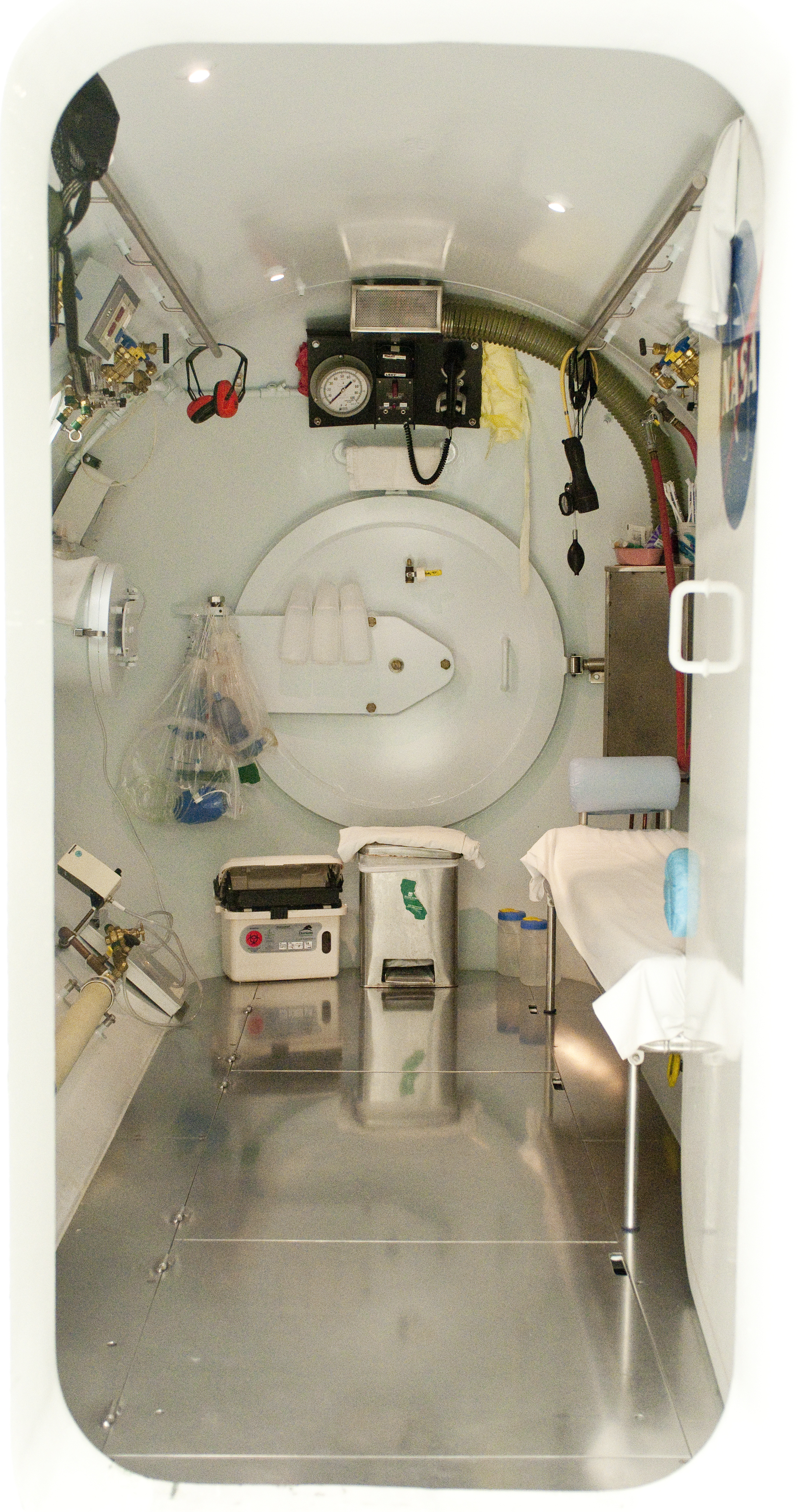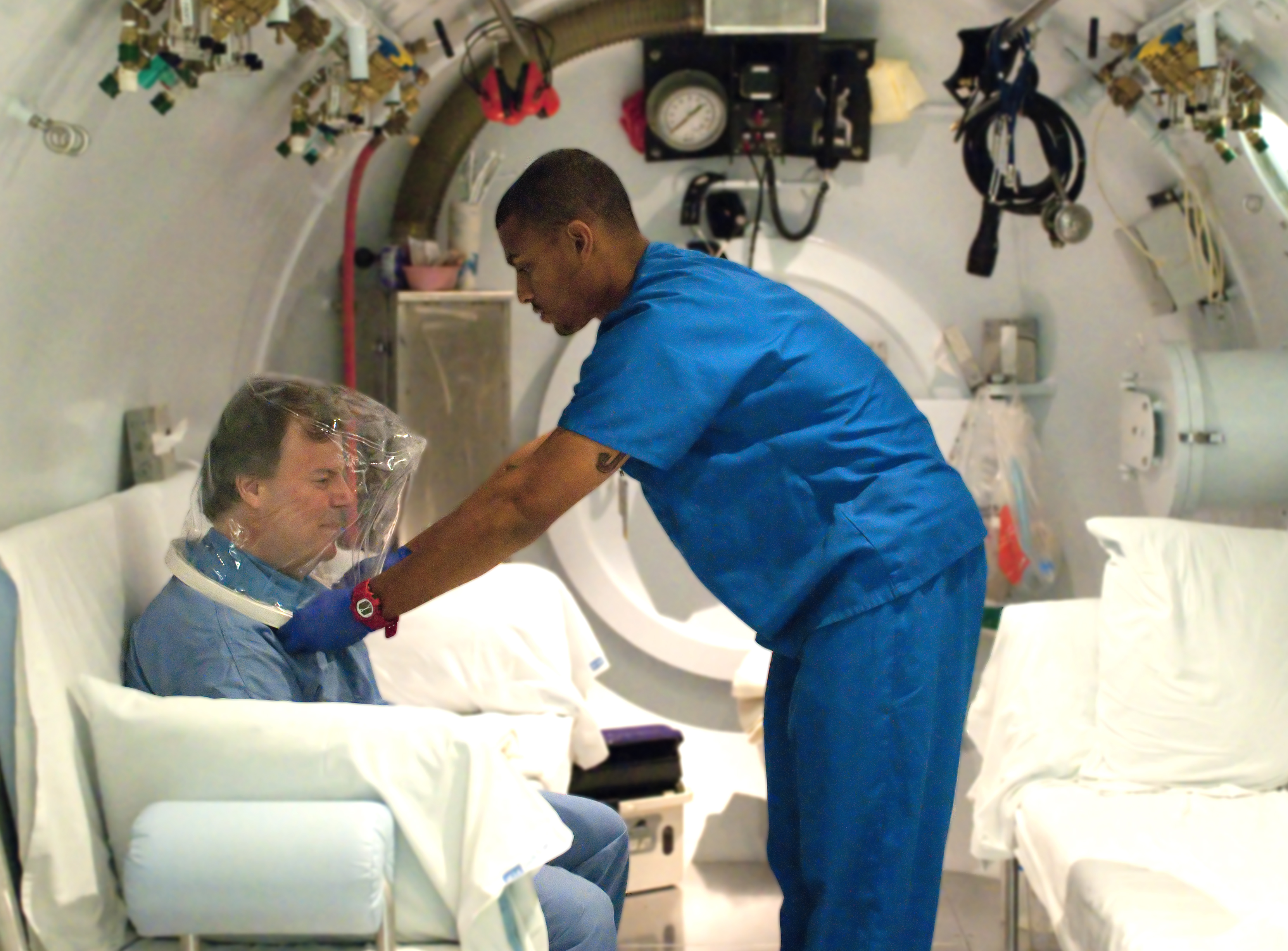
In the emergency pressure chamber situated at the UCLA Gonda Center for Hyperbaric Medicine, patients are treated with oxygen therapy.

Technicians control the pressurized chamber using a command center where internal conditions of the chamber can be monitored and altered.
About a dozen patients, each wearing a thin clear hood, sat under dim lights within a large cylindrical chamber.
A team of doctors and technicians in blue scrubs observed the patients from a set of TV monitors, fidgeting with knobs and meters to control air pressure inside the submarine-like oxygen chamber.
“OK, we are going down, the divers are ready,” one of the technicians said to the medical team.
The two-hour therapy session at the UCLA Gonda Center for Hyperbaric Medicine had officially begun.
While in the high-pressure chamber ““ which features the amount of pressure found 30 feet underwater ““ patients breathe a high concentration of oxygen and their tissues receive hundreds of times more oxygen than they would normally get with regular unpressurized air, said Dr. Susan Sprau, medical director at the UCLA Gonda Center for Hyperbaric Medicine.
Hyperbaric oxygen therapy helps decrease swelling in general or from surgical wounds that are not properly healing. It immobilizes bacteria and decreases the strength of any toxins that the bacteria produce.
Patients receive this treatment for wounds when standard therapy has failed to heal a wound and, in some cases, when they are at risk for amputation, Sprau said.
Patients come in five times a week for two-hour sessions each. During the session, doctors and technicians refer to the patients as divers and the process as diving, as a way to mimic submarine dives.
“Honestly, I love the hyperbaric chamber,” said Albert John Britton, a former professional soccer player and diabetic who began treatment in February for a wound in his toe that he sustained while cycling.
The treatment costs as much as blood transfusion ““ $400 per session, which is usually covered by insurance and is nominal considering it is able to increase the lifespan of the patient, prevent amputation and make the patient more independent, Sprau said.
The UCLA Gonda Center for Hyperbaric Medicine was established in 1997. Among 2,000 other similar centers in the country, it is one of the few that allow multiple people to undergo therapy at the same time, said Walter Chin, registered nurse and program director at the UCLA Gonda Center for Hyperbaric Medicine.
The center treats about 10 to 20 patients a day and averages between 200 to 350 treatments per month, Sprau said.
Half of the patients who come to the center are diabetic and have wounds in their feet, said Dr. Steven Farley, assistant clinical professor of vascular surgery at the UCLA Gonda Center for Hyperbaric Medicine. The other half have internal or external post-radiation wounds, he said.
One part of the therapy is also to teach patients modified behavior. For patients with foot wounds, Chin said it is necessary for them to take care of their feet. He said the 30-day routine is not only about hyperbaric oxygen therapy ““ it is a learning process as well.
Jody Glasser, a 53-year-old electrical engineer, was in his eighth week of therapy for damaged blood vessels incurred during radiation therapy for cancer.
“I didn’t really know what to expect when I first came here. I sat down with my doctor before the first treatment and he showed me everything,” Glasser said. “You sit there for two hours and there is not much that you can do other than read a book.” “My problem has mostly gone, and I am much, much better than when I first started the therapy,” Glasser said.
“We are one of the few facilities in the state (that) can take care of critically ill hyperbaric patients, and one of the few facilities (that) are available for emergencies 24/7,” Sprau said.
The center once treated a college student who had been exposed to carbon monoxide, Sprau said. She came to the hospital in a coma and doctors did not expect her to recover, Sprau said. With hyperbaric therapy, the patient recovered and eventually returned to school, she added.
The center has also treated patients who had a scuba diving incident and were paralyzed from the waist down. With hyperbaric treatment, they were able to start walking again, Sprau said.
“We have had many miracles like that,” she said.
Some people have the misconception that hyperbaric therapy prevents aging or helps cure cartilage damage in the knees, Farley said. The UCLA Gonda Center for Hyperbaric Medicine only treats patients with diagnoses that hyperbaric medicine has been proven through scientific research to help.
Britton, who coached badminton at UCLA for about six years and is currently a soccer coach at El Camino College, said he appreciates the teamwork at the center.
“The whole staff, from the doctors to the technicians, is so professional,” he said. “They make you feel so comfortable.”
Because of his condition, the 60-year-old has to take extra care while doing the things he loves, such as playing soccer and cycling. “Hyperbaric therapy has helped me a lot,” he said.
During the sessions, patients establish good relationships with each other. Some even bring treats, like donuts, to the center, Britton said.
“You meet people there, exchange emails and keep in touch for a little while,” he said.
